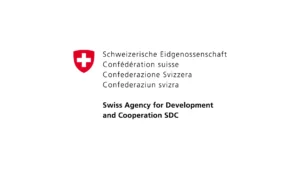What is a Theory of Change?
The Theory of Change (ToC) is a methodology that assists organisations in planning, implementing, and evaluating initiatives aimed at creating social and environmental change. At its core, it offers a comprehensive approach that involves understanding the root causes of a specific social issue and developing a clear, systematic plan to address those causes effectively. The primary purpose of a ToC is to provide a roadmap for organisations committed to making a positive social impact, ensuring that their efforts are concentrated on the most effective interventions.
What are the origins and benefits of using a Theory of Change?
The Theory of Change methodology, which originated in the realm of program evaluation during the 1960s and 1970s, has since evolved into a comprehensive approach for planning and implementing social impact initiatives. This methodology is widely embraced by non-profit organisations, government bodies, and philanthropic foundations across the globe. Its appeal to investors and entrepreneurs lies in its adaptability, as it can be tailored to meet the specific needs and objectives of diverse initiatives.
One of the fundamental benefits of the ToC is its capacity to assist organisations in identifying potential risks and challenges associated with their initiatives. Moreover, it empowers them to devise strategies for effectively mitigating these risks. Additionally, it offers a robust framework for measuring and evaluating the impact of these initiatives over time. Through ToC, organisations can ensure they are not only achieving their intended outcomes but also making a meaningful and positive difference in the world.
What are the key steps to define a compelling Theory of Change?
1. Define the problem
The first step in designing a Theory of Change is to define the problem that you are seeking to address and map its root causes and main consequences. This may involve conducting research, engaging with stakeholders, and gathering data to better understand the root causes of the problem.
2. Define impact goals and reverse engineer solutions.
Once you have a clear understanding of the problem, you can define your goals and start mapping what your solution should be. You can then develop a logic model that outlines the inputs, activities, outputs, and outcomes of your initiative. This model should be based on evidence and should clearly articulate the connections between your activities and the outcomes you hope to achieve.
3. Identify assumptions and risks
4. Engage stakeholders
Throughout the process of designing your Theory of Change, it is important to engage with stakeholders and gather feedback on your approach. This can include community members, funders, partners, and other key stakeholders who are invested in the success of your initiative.
5. Define metrics for success
In order to track the progress of your initiative and evaluate its impact, it is important to define metrics for success. This may include both quantitative and qualitative measures. Like the number of people reached, changes in behaviour or attitudes, and improvements in health or well-being.
6. Monitor and evaluate progress
By following these steps and being intentional in your approach, you can design a ToC that is well-articulated, evidence-based, and capable of driving meaningful social impact. It is also important to note that designing a Theory of Change is not a one-size-fits-all process. Depending on the specific context and goals of your initiative, you may need to adapt and modify these steps to ensure that your ToC is effective and appropriate.
Delve into a Learner Story and read about real life examples from one of our learners. Gain further insight and understanding into our Theory of Change Course!
What do you need in order to design a Theory of Change?
Developing a comprehensive Theory of Change requires a deep understanding of the underlying causes of a specific social issue. Equally important is an awareness of the diverse interventions available to address these causes. Practitioners should articulate their assumptions regarding how these interventions will lead to the desired outcomes. Additionally, they must create a precise plan for measuring and evaluating the impact of these interventions over time.
Furthermore, practitioners need to effectively communicate their ToC to stakeholders. This ensures that everyone involved in the project comprehends the strategy for effecting positive change in the system. If you’re interested in gaining a thorough understanding of Theory of Change design, along with access to multiple templates, tools, and valuable insights from experienced practitioners, consider exploring our dedicated training course below!
Frequently Asked Questions
What is a theory of change?
A theory of change is a structured framework that outlines the steps and assumptions underlying how a program, project, or intervention is expected to bring about desired outcomes or impacts. It clarifies the logic and causal relationships that guide planning, implementation, and evaluation efforts.
What is the difference between a change theory and a theory of change?
A change theory refers to a specific framework or model explaining how change occurs, often within a particular context. A theory of change, on the other hand, outlines the desired outcomes and steps to achieve a specific goal or change, offering a roadmap for planning and evaluation.
What are the steps to creating a theory of change?
Creating a theory of change involves several key steps: 1. Define the problem. 2. Define impact goals and reverse engineer solutions. 3. Identify assumptions and risks. 4. Engage Stakeholders. 5. Define metrics for success. 6. Monitor and evaluate progress

Designing a Robust Theory of Change









Hi , I am From Canada and would like to know the cost for the course and can I do the course on my own time?